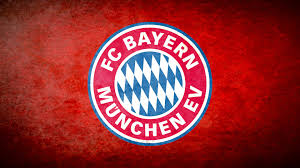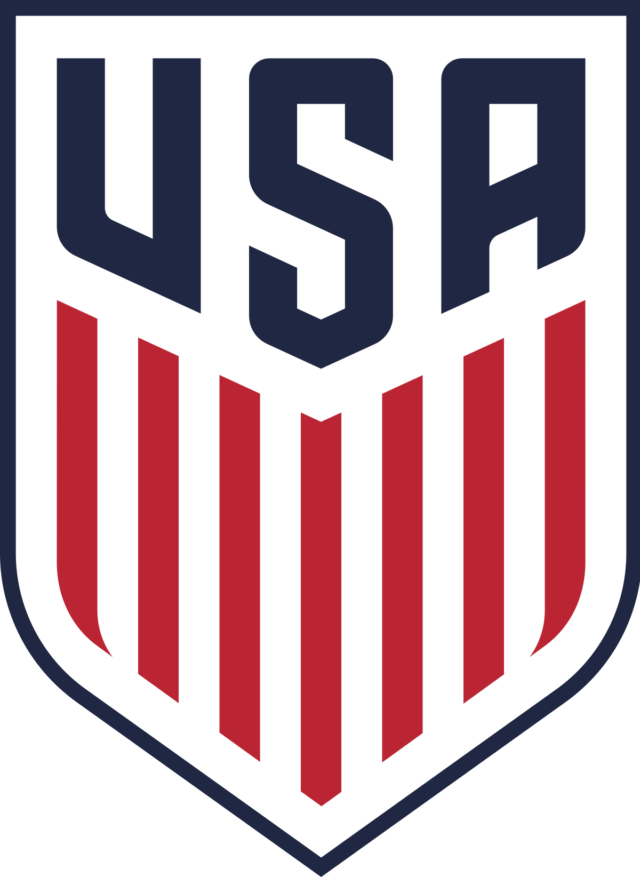The legendary North American Soccer League (NASL) was established in 1968 and operated until 1984 featuring famous international players such as Pelé, Johan Cruyff, Franz Beckenbauer, Gerd Müller, George Best, Bobby Moore, Carlos Alberto, Giorgio Chinaglia, and Johan Neeskens. But the idea to bring foreign players to a United States soccer league had started some years earlier.
William Cox’s vision
William Drought Cox was born in New York City in 1910 and since the age of 17 he ventured into a long list of occupations. After working on Wall Street, he built a lumber business and in 1943 he managed to a baseball club Philadelphia Phillies, for $80,000. But some years later Cox was banned from baseball for betting on his own team’s games.
His business trips to Europe triggered his interest for soccer and he soon saw a potential market in the United States for a new league. Of course, alongside the American Soccer League (ASL), which was operating since 1921. However, the level of the domestic talent was rather mediocre.
Cox had already noticed that the summer tours of European teams in the States were met with great success the previous years, attracting much bigger crowds than the ASL did. So, he started considering the possibility of importing European and South American teams during their off-seasons! That practically meant that those clubs instead of friendly tour matches would play official games as a part of an international summer league. Something like the modern International Champions Cup.
His aim was to launch a league that would also be considered as a world club championship, given that there was no Intercontinental Cup in the 1950s. Unfortunately, it started at that year, in 1960.
The creation of the International Soccer League was announced by William D.Cox in a press conference in New York, January 1960. All the matches would take place in New York and New Jersey. At Manhattan’s Polo Grounds, the Downing Stadium on Randall’s Island and at Roosevelt Stadium in Jersey City.
USSFA approval
There was a major problem and it was simply called: USSFA (U.S. Soccer Football Association). The USSFA was sanctioned by FIFA to authorize the creation of a new league in the United States. Therefore, any league created without a USSFA authority would automatically be declared as an “outlaw league” by FIFA. And subsequently, every player of such a league would not be eligible to play for a national team or transfer to another league. A situation like this had already happened with the not recognized by FIFA Colombian league in the 1940s. So, the entrepreneur from New York had little room to manoeuvre.

But he effectively did it by reaching an agreement with the American Soccer League, a USSFA-recognized league. The ASL would schedule just one game during the ISL season giving space to the latter to develop the maximum attendances possible. Cox also managed to gain regional television coverage, and as the interest in the ISL increased, matches were also played in Chicago, Detroit, Boston and Los Angeles, after 1961.
The star players of the league
Dukla Prague was one of the strongest teams that played in the ISL having international midfielder Josef Masopust at their disposal. West Ham featured Bobby Moore, one of the best defenders of all-time and Geoff Hurst, the striker of the England national team. Dragan Dzalic and Dragoslav Sekularac of Red Star Belgrade, some of the best players in the history of Yugoslav football, played 3 seasons in the ISL. Their countryman Miloš Milutinovic also featured for one season.
Other big-name players were the Hungarian forward Florian Albert of Ferencvaros, German defender Sepp Piontek of Werder Bremen, Yugoslav right winger Vujadin Boskov of Sampdoria (they won their only league title with Boskov as manager in 1991), while Austrian Rapid Wien fielded international midfielders Gerhard Hanappi and Walter Skocik.
Two of the players of the ISL were voted by IFFHS (International Federation of Football History & Statistics) in its century election list. Bobby Moore was voted the 24th best player of the 20th century and Czech Josef Masopust was 41st on the 1999 IFFHS list.
The inaugural 1960 season
The New York Americans club from Bronx (founded in 1931) were the only American team of the league in its inaugural season. The club had previously played in the American Soccer League winning the title twice: in 1936 and 1954.
The league consisted of 12 teams was divided into 2 sections (groups) with the section winners qualifying for the final match that would determine the champion. Brazilian Bangu won the 1960 title beating Scottish Kilmarnock by 2-0 in the final and were also awarded the 1960 Challenge Cup. The latter was rather a Super Cup, a one-off match that between the league winner and the Challenge Cup winner of the previous year.
The teams of the first championship were: New York Americans (USA), Kilmarnock (Scotland), Burnley (England), Glenavon (Northern Ireland), Bayern Munich (Germany), Olympic Nice (France), Bangu (Brazil), Red Star (Belgrade), Sampdoria (Italy), Sporting Lisbon (Portugal), IFK Norrköping (Sweden) and Rapid Wien (Austria). Brazilian midfielder Ademir da Guia of Bangu, who would later become a Palmeiras legend won the MVP award.

At the time, Bora Milutinović, the coach who led the US national team to the 1994 World Cup was playing for Partizan Belgrade. But his older brother forward Miloš Milutinovic, one of the most talented Yugoslav players of all time, was the first in the family to visit the USA. Miloš was a member of the Bayern Munich squad in that first season.
Bora Kostic, another Yugoslav player who played for St.Louis Stars in 1967, was part of the Red Star Belgrade squad in that season.
Dukla Prague impressed in the 1961 season
The Czechs having internationals who would later play in the 1962 World Cup final, like Josef Masopust and Josef Jelinek were just too good for the rest. Dukla won 6 out of 7 group games, drew 1 and demolished Everton by 7-2 and 2-0 in the finals. And the ”Toffees” had previously topped their group winning all their games. New York Americans fought hard and finished third in the first group above European teams like Karlsruhe, Kilmarnock, Dinamo Bucharest and Besiktas. But, the team that surprised the most was Montreal Concordia who finished runners-up in the second section behind powerful Dukla Prague.
America RJ made it in 1962
The third season of the league did not feature any of the teams participated in the previous two seasons. All 12 teams debuted in the league and America from Rio Janeiro (Romario’s last club) were the worthy winners. America beat Portuguese Belenenses in the finals (2-1 and 1-0). Dukla Prague traveled again to the States, but just for the Challenge Cup which they won (1-1 and 2-1 against America).
Bobby Moore, the 1963 MVP
West Ham returned to the league in 1963, three years after their first appearance. The East London club narrowly edged Italian Mantova out in Group 1. Gornik Zabrze topped the other group but West Ham proved more experienced in the finals. Led by Geoff Hurst, Bobby Moore and Martin Peters lifted the league trophy with a 2-1 aggregate score against the Poles (1-1 and 1-0). Moore was awarded the title of MVP, but he could not help the ”Hammers” win the double. Dukla Prague who traveled to the US again just for the Challenge Cup beat West Ham by 1-0 in the final.

Belenenses and Kilmarnock were the only clubs who had previously played in ISL as all the other teams were new. For a second season in a row there was no representation for the US in the league.
1964: the beginning of the end
ISL’s growing success caused the interest of USSFA who tried to become more involved in the project. However, Cox refused to allow USSFA to have an active role in the league’s management and after that it all started going downhill for the ISL. As a result, the 1964 league featured 10 teams and not 12. All teams were new, apart from Red Star Belgrade. Werder Bremen and Zaglebie Sosnowiec met in the finals where the latter beat the Germans twice 4-0 and 1-0 to convincingly clinch the league title. But the Polish club lost in the Challenge Cup final from (who else?) Josef Masopust’s Dukla Prague.

The final season
The 1965 was the last season of the ISL, mostly due to its ongoing conflict with the USSFA. The federation forbade Cox from importing teams into the U.S. and threatened to declare the ISL an ”outlaw league”. The ISL commissioner was forced to fold the league. He later sued USSFA in the federal court for anti-trust violations, a suit he eventually won.
Another Polish team reached the league finals for a third consecutive time. Polonia Bytom were the eventual winners of the trophy facing the New York Americans in the finals! The New York club presented a strong squad in 1965 with international defender Tibor Resznecki and Rick Horst being their key players. Reaching the finals was the furthest they could go as Polonia had a more talented squad. The New Yorkers lost twice 3-0 and 2-1.
But they had already won the Group 2 leaving behind teams like Portuguesa, Varese, Munich 1860, and West Ham United. In the first group, Polonia’s win was also a surprise at the expense of Hungarian Ferencvaros who were led by Florian Albert. West Bromwich Albion and Kilmarnock were the other teams of that section.
ISL and USA: the precursors of NASL
The international championship model that William Drought Cox created was used again in 1967. A new league called United Soccer Association (USA) was formed importing foreign teams. The format was exactly the same: 2 sections of 6 teams each and a two-legged final. The only difference was that the imported teams were given “local” names. For example the 1967 the champions Los Angeles Wolves were completely comprised of the English Wolverhampton Wanderers’ players. USA, a FIFA-sanctioned league and would eventually merge with the National Professional Soccer League (NPSL) to launch the NASL in 1968.
ISL stats (1960-1965)
Clubs with most ISL appearances
Kilmarnock (4): 1960, 1961, 1963, 1965
Red Star Belgrade (3): 1960, 1961, 1964
New York Americans (3): 1960, 1961, 1965
Dukla Prague (2): 1961, 1965
Rapid Wien (2): 1960, 1961
Bangu (2): 1960, 1961
Wiener AC (2): 1962, 1963
West Ham (2): 1963, 1965
Belenenses (2): 1962, 1963
ISL Finals
1960: Bangu – Kilmanorck 2-0
1961: Dukla Prague – Everton 7-2, 2-0
1962: America RJ – Belenenses 2-1, 1-0
1963: West Ham – Gornik Zabrze 1-1, 1-0
1964: Zagłebie Sosnowiec – Werder Bremen 4-0, 1-0
1965: Polonia Bytom – New York Americans 3-0, 2-1
American Challenge Cup Finals
1960: Bangu (automatically awarded)
1961: Dukla Prague (automatically awarded)
1962: Dukla Prague – America RJ 1-1, 2-1
1963: Dukla Prague – West Ham 1-0
1964: Dukla Prague – Zagłebie Sosnowiec 3-1, 1-1
1965: Polonia Bytom – Dukla Prague 2-0, 1-1
MVP of the league
1960: Ademir da Guia (Bangu)
1961: Válter Santos (Bangu)
1962: Carl Bogelein (Reutlingen)
1963: Bobby Moore (West Ham United)
1964: Gerhard Zebrowski (Werder Bremen)
1965: Uwe Schwart (New Yorkers)






